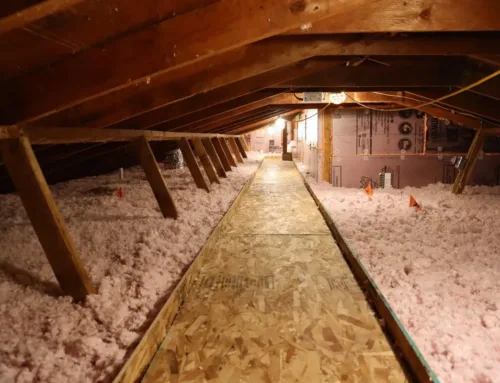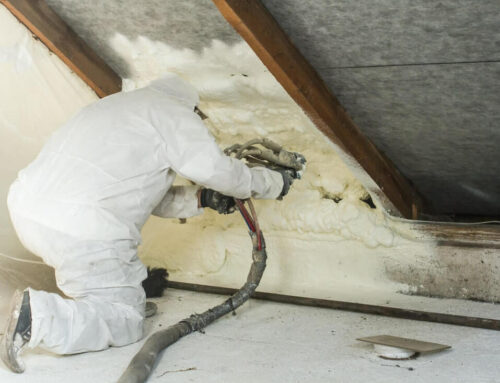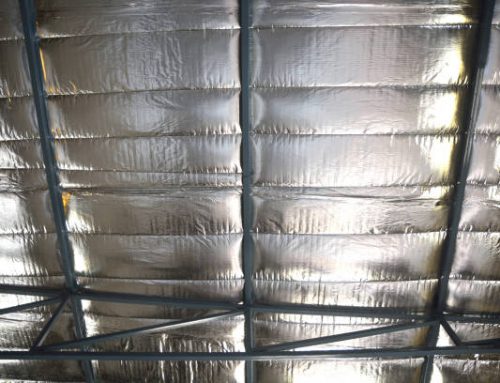When it comes to insulating your attic, you have two main options – spray foam insulation or blown-in insulation. Both have their advantages, but is one better than the other for attics?
There are several factors to consider when deciding between spray foam vs blown-in attic insulation in Brampton.
R-Value
The R-value is the measure of an insulation’s ability to resist heat flow. The higher the R-value, the better the thermal performance. Most spray foam products have an R-value between R-6 and R-8 per inch. Meanwhile, common loose-fill blown-in insulation like cellulose and fiberglass typically range from R-3 to R-4 per inch. To achieve maximum energy efficiency, spray foam allows you to pack in more R-value in fewer inches.
For example, to obtain an R-30 rating, you would only need 3.5 to 5 inches of closed-cell spray foam. But getting to R-30 would take 9 to 10 inches of blown-in cellulose or fiberglass. This makes spray foam a great option when attic space is limited. The denser insulation of spray foams provides higher R-value coverage with a thinner application.
Air Sealing Ability
Beyond just insulation, spray foam also air seals your attic by filling in cracks, gaps, and penetrations as it expands. Air leakage accounts for up to 30% of home energy loss. When installed correctly, spray foam acts as a protective barrier to stop conditioned air from escaping through all those little paths of least resistance in your attic.
Blown-in insulation alone does nothing to plug air leaks. For best energy efficiency and comfort, your attic shouldn’t just be insulated, but air sealed too. This combination gives spray foam a performance advantage over basic blown-in insulation.
Performance Over Time
When properly installed, spray foam insulation bonds tenaciously to attic framing and rafters. This forms a rigid insulation blanket that maintains full contact over all surfaces. Spray foam won’t sag or settle within the attic over years of use. You can be confident you’ll consistently get the rated R-value.
On the other hand, blown-in attic insulation is loose-fill. Over time, it’s prone to shifting around, drifting, or compacting down. This allows thin spots or void areas to develop, decreasing thermal effectiveness. Maintaining the full R-value of loose-fill insulation requires periodic blowing in supplemental insulation.
Ease of Installation
One of the appeals of blown-in insulation is the ease of DIY installation. With proper protective gear, you can rent insulation-blowing machines and install them yourself. Spray foam application has a steeper learning curve and requires training to use the spraying equipment correctly. Because of this, spray foam insulation is best left to experienced professional installers.
Improper technique by DIYers risks uneven application, poor adhesion, and achieving lower R-values than expected from spray foam. Hiring a certified pro like Toronto Spray Foam Kings ensures your attic foam insulation is done right the first time.
Additional Factors to Consider
A few other considerations when weighing these two attic insulation systems:
- The upfront cost is often higher for spray foam insulation, but it may pay for itself in the long term in energy savings.
- Building codes may require adding a thermal barrier over spray foam for fire protection.
- Blown-in insulation materials are available with various noise-dampening enhancements.
- The smooth surface of sprayed-on foam offers a cleaner, more uniform look than loose fill.
Final Words:
For most Attic insulation blown in Brock University , the benefits of hiring a professional spray foam contractor usually outweigh the lower cost of blown-in. While blown-in attic insulation has its place for ease and affordability, spray foam offers superior insulation, air sealing, and consistent long-term thermal performance.
Discussion
Related Posts
If you enjoyed reading this, then please explore our other articles below:






